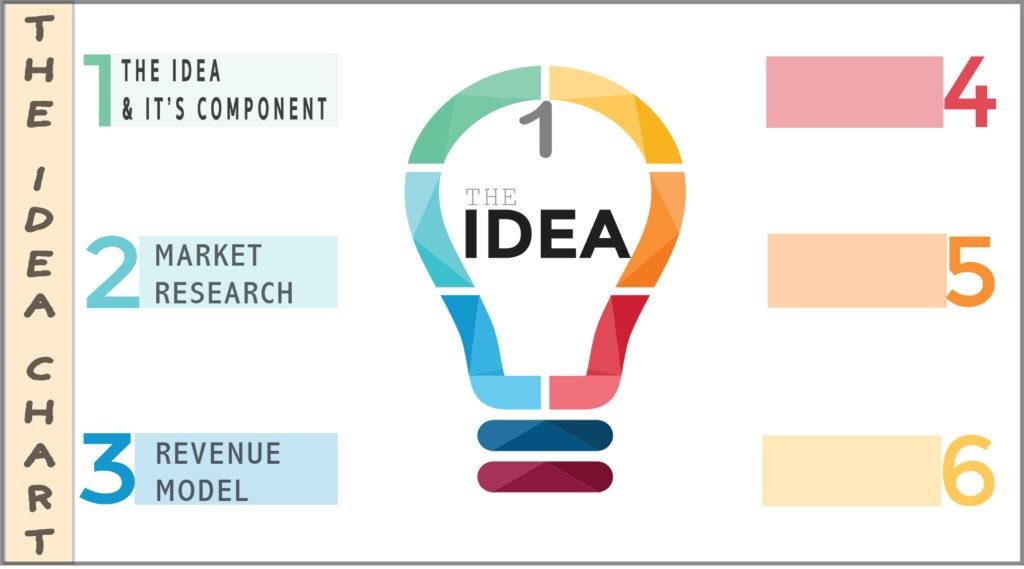- Idea To Profit Series: The Ultimate Guide
- Idea To Profit Series: The Idea And It’s Components
- Idea To Profit Series: Market Research
- Idea To Profit Series: Revenue Model
- Idea To Profit Series:Unique Selling Proposition
- Idea To Profit Series: Testing An Idea
- Implementation, Next In The Idea To Profit Series
Revenue model blueprint: choose the right one
Our previous post discussed the first steps for turning an idea into a thriving business. To highlight:
- Knowing your strengths
- Market research
- Unique selling proposition(USP)
- Defining revenue model
- Testing scalability of an idea, and finally
- Implementation
What we’ve shared so far is a definite requirement for turning your idea into profit. However, we wanted to expand on one of the key module we shared in the previous post. While we cannot ignore the fact that all the components above are an important part of the process, the revenue model is an element that can be the defining factor in any business.
What is a revenue model?
Basically, it’s a prototype that shows how your business will earn revenue. A revenue model serves as one of the key performance indicators (KPI) to gauge the profitability of a business. In addition, it helps to understand how a business entity sells its products or services to generate profit.
Importance of defining a revenue model
We cannot overemphasize the importance of this step. It’s important to realize that by deciding which model a company to adopt, it becomes easier to determine a business revenue stream from the targeted customers. Also, it will help to focus on pivotal factors that can assist in the growth and sustainability of a business. Markedly, it will further clarify the challenges in defining a plan for redistributing the profits from sales & marketing. By studying the revenue model of a business, you can determine the potential success of a business and its position in a particular market. Consider that it also helps constrain costs, which leads to a more sustainable business.
Now that we’ve shared the importance of defining a revenue model, let’s dive into the various revenue models to consider.
Single purchase revenue model

Simply put, it’s when a consumer makes a purchase by buying a product. Or when receiving a service by making a onetime payment. For instance, with this model, a business renders a product or services to customers in return for making a single payment.
As an example, a single purchase product would be to buy a bag or a pair of shoes from your favorite store. A service-based process would be to visit a restaurant.
The service provided happens once, hence the transaction is complete. The onetime transaction for a product or service offering is complete. You might buy or get service from a business in the future, but the process is a new purchase or service based a previous experience.
Subscription Model

It was first introduced in the 17th century mainly by newspapers and book publishers. Subsequently, because of technological advances, many companies are moving from a single purchase revenue model to a subscription-based model.
In this model, the transaction or the revenue happens repeatedly by providing consistent access to a product or a service. Simply, customers subscribe to continue using the product or service. Usually, this is an auto-renewing model with a pre-authorized access to a debit or credit card.
Subscription model helps create a strong relationship with customers and supports customer loyalty. Some services that use this model are gyms, Subscription TV, video-on-demand streaming platforms (Netflix and Amazon prime), or even personal care products. Subscriptions are usually for different periods, from monthly, yearly, and quarterly.
In the past, magazine subscriptions were one of the most common subscription models. Publishers offers a monthly subscription which includes twelve issues delivered each month, over 12 months.
Today, it is more common to think of Netflix or Amazon, which uses a subscription model to nurture customers while building profit. The benefit of this model is that businesses are better able to forecast their revenue while planning their distributions more accurately. This is because of continuous monthly revenue.
Franchising Model

In this model, an individual known as a franchisee operates this revenue model under the trademark, branding, and business process of a franchisor. A franchisor sells the rights to open stores and sell products or services using its brand expertise and intellectual property.
There is a commercial and legal relationship between the franchisor and the franchisee. Thus, the franchisee sells the product or service and pays a fee known as royalty to the franchisor.
There are two franchising models to consider: business format franchise and product distribution franchise.
- With a business format franchise, the franchisee may use the franchisor’s trade name and an entire system for operating the business.
- While with a product distribution franchise, the franchisor manufacture the product and the franchisee sells the product.
Example of a business format franchise would be McDonald’s Dunkin donuts. A Service-based franchise would be a home cleaning company..
Affiliate Model

An Affiliate revenue model involves a company paying a third-party publisher to generate leads for its products and services. Therefore, the third-party publishers are the affiliates and receive a fee to promote the products or services of the company.
According to statistics generated by Truelist, affiliate marketing handles 16% of global ecommerce sales.
Consider a scenario where an e-commerce merchant is looking to reach a wider audience. Hence, he reaches out to a third-party publisher who may own multiple websites or email marketing lists. They would use the vast network of these publishers to grow their product or service revenue and brand.
The publisher who owns the website, choose to promote the merchant product or services, for a fee.
You don’t have to be a sales executive to advertise products or services and get paid. Affiliates are usually blogger, influencers, artists, or anyone with the ability or audience to promote the product or services of various companies or businesses.
The internet has immensely increased the prominence of affiliate marketing, because third party advertisers can add affiliates link to their web pages describing and selling products and services.
With the increasing usage of social media platforms like Pinterest, Facebook, Twitter, Instagram, etc., generating revenue through affiliate marketing has increased enormously. In fact, the Big Four (Apple, Google, Amazon, Facebook) Amazon use websites and blogs to generate their profits.
Summary
While reading the above text, I’m confident that you are wondering which one is THE ONE for you. Which revenue model blueprint can help your business reach new heights? Or is there a way to mix two or three of the models to create the right revenue stream?
Don’t be hasty. Take the time and research the different options to determine which is the right fit. Research potential ideas and develop a pros and cons list of each model.
Finally, acquaint yourself with each revenue model blueprint to establish, which would align with the idea you envision turning into a business.
Nothing worth having was ever achieved without effort. -Theodore Roosevelt









